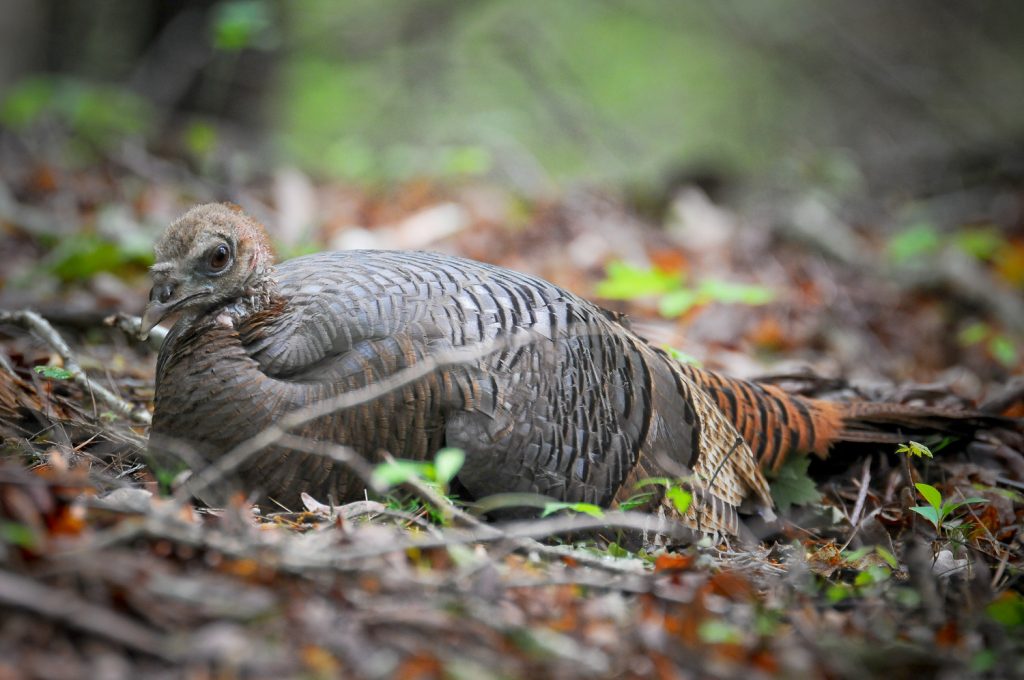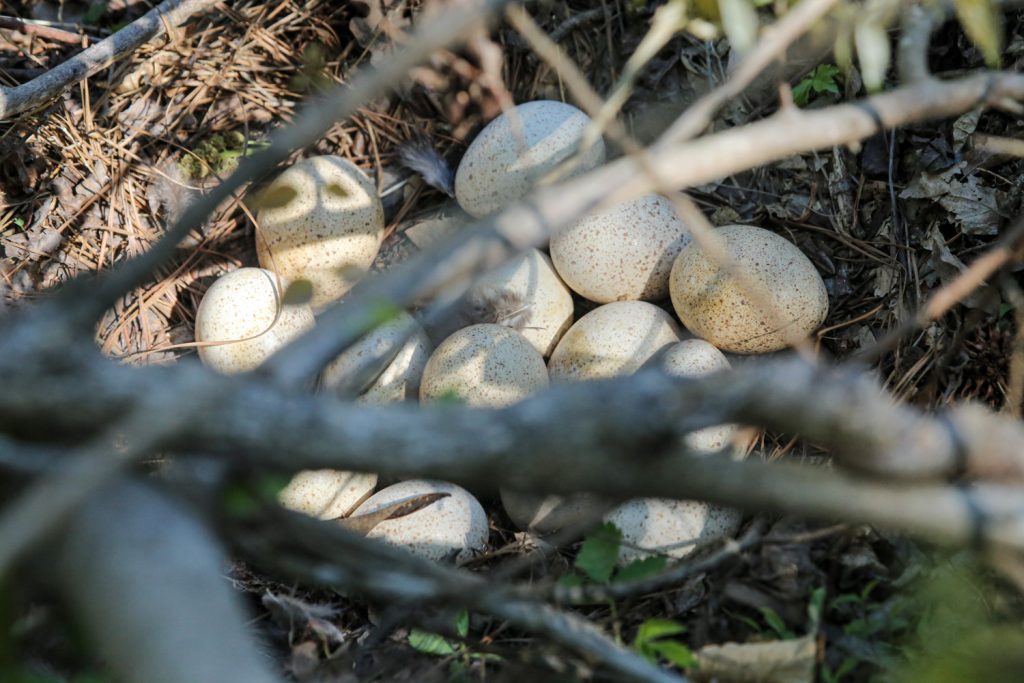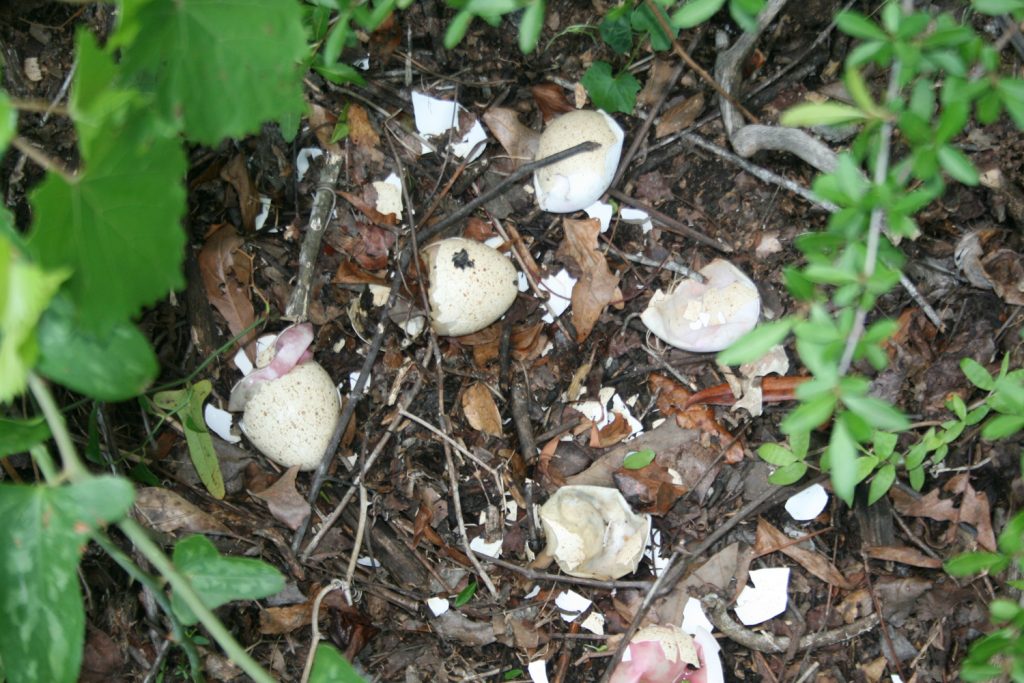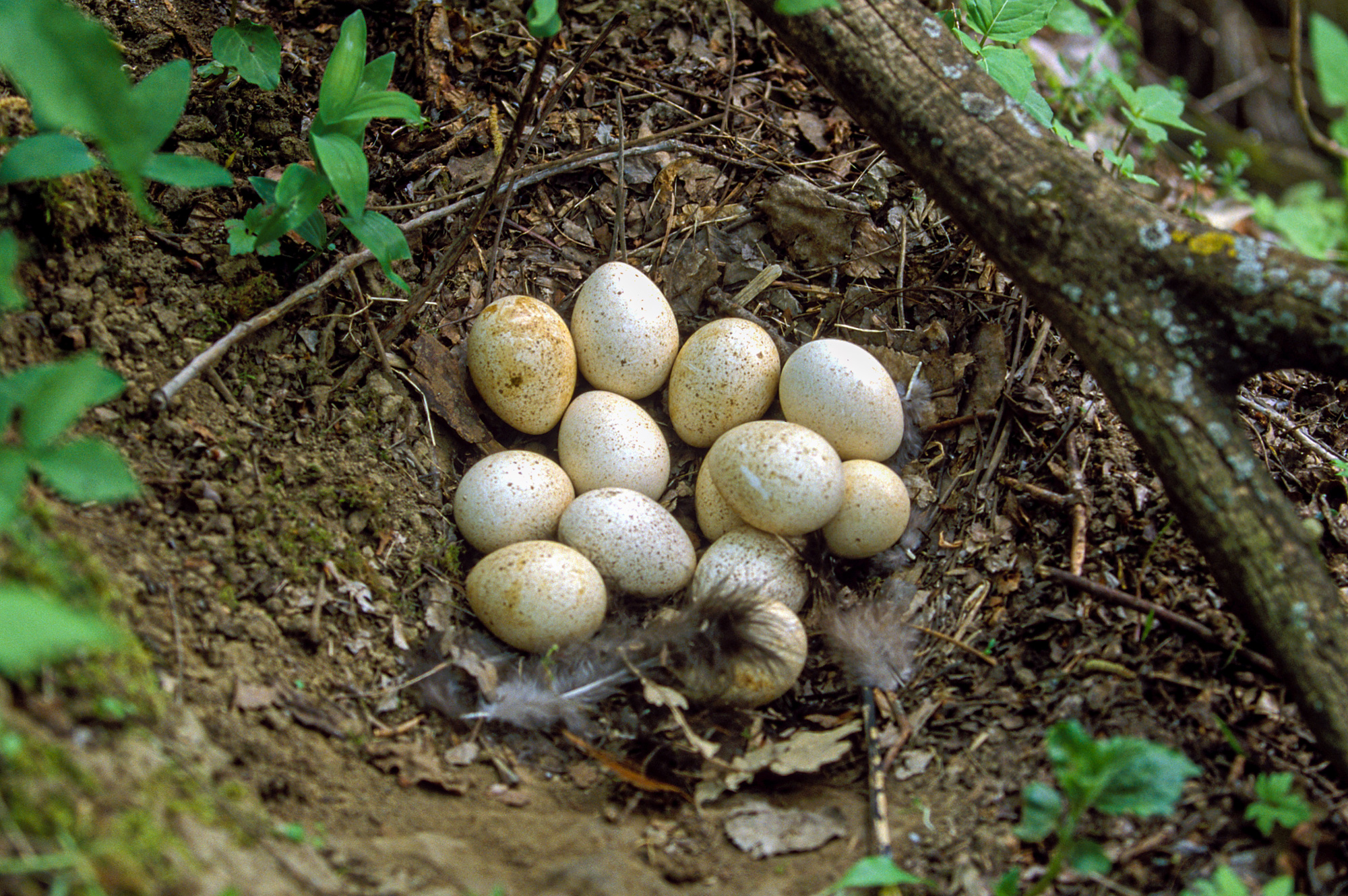Life and Times of a Wild Turkey Nest
Nesting on the ground is a risky business. Each day is full of danger and brings a new challenge for a nesting hen, which is what makes their feat so impressive.
Poults are extremely susceptible to weather and predators in the first four weeks after they hatch. If they make it past that point, the production is considered a success. It’s important for enough young turkeys to be produced that offset the annual loss, so populations remain sustainable.
Breed first, nest later
Copulation or breeding must first take place for hens to produce fertile eggs.
The timing of breeding is determined by the female turkey and researchers are now learning that physical conditioning may have a greater influence on reproduction. Reserachers believe a hen is not suited to take on the rigors of nesting unless physically in a condition to do so. Therefore, poor conditioning caused by poor nutrition can be blamed for late nesting.

The nesting period
It takes hens about two weeks to lay a full complement of nine to 13 eggs. Hens will only visit the nesting site long enough to deposit her egg for the day. The rest of her time will be spent elsewhere feeding and roosting.
At the end of the laying period, incubation starts. During this time, the hen puts herself in danger to stay on the nest day and night for about 28 days. She needs to bulk up prior to nesting and may take a brief recess period around mid-day to feed on protein-packed insects.
Little is known about how hens select their nesting sites, but as a general rule hens prefer:
- Nesting cover within 30 meters of an opening of suitable brood habitat, such as a road shoulder, trail, field, food plot, utility right of way, forest canopy gap or other openings
- Nest sites with considerable lateral cover and light overhead cover such as tree limbs, briars, vines, broom sedge or other vegetation
- Nest sites which provide hens good visibility of predators when she raises her head and also good concealment of her body and nest when at rest

Predator problems
Before hatching, nests are in danger of foxes, skunks, bobcats, raccoons, opossums, coyotes, crows, hogs, dogs and some snakes. After hatching, avian predators, such as hawks and owls also threaten poult lives.
Various studies indicate 10 to 40 percent of nests successfully hatch. Then, only about 25 percent of hatching poults will make it beyond four weeks.
The good news is despite huge predation losses each year. Most areas seem to produce enough surviving young to replenish annual losses. Excluding weather events beyond man’s control, improving brood and nesting habitats can increase the number of young that survive each year.

How you can help:
- If your landscape is dominated by old growth hardwood forests, consider a light thinning of low wildlife value trees because with more brood and nesting habitat, predators can’t concentrate their search habits.
- On pine sites, practice thinning and prescribed-burn tactics because research indicates that turkeys favor nesting in open canopy pine sites burned during the previous year’s burning season.
CONNECT WITH US
National Wild Turkey Federation
770 Augusta Road, Edgefield, SC 29824
(800) 843-6983
National Wild Turkey Federation. All rights reserved.
